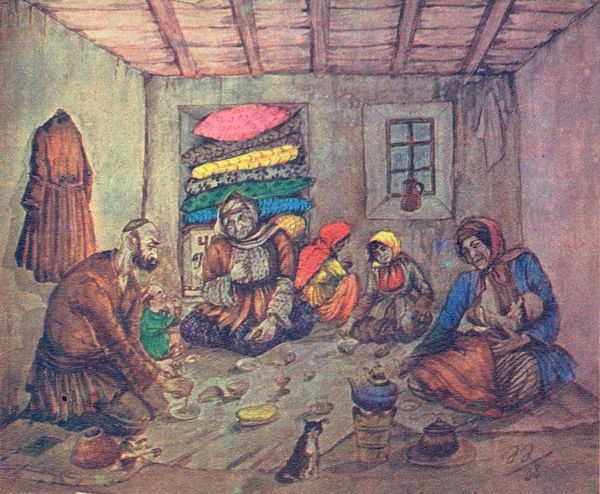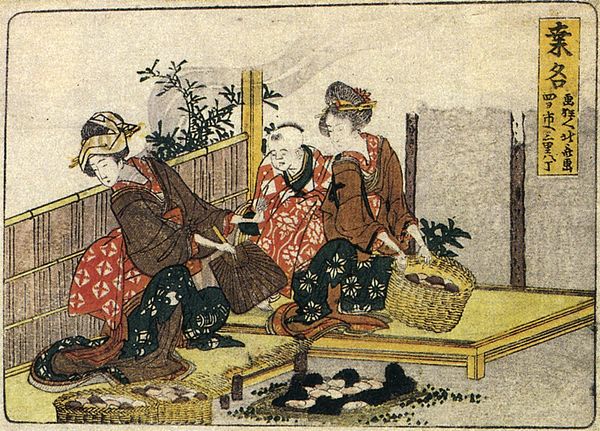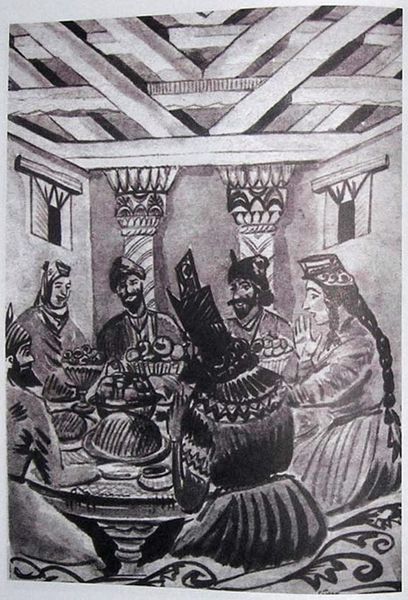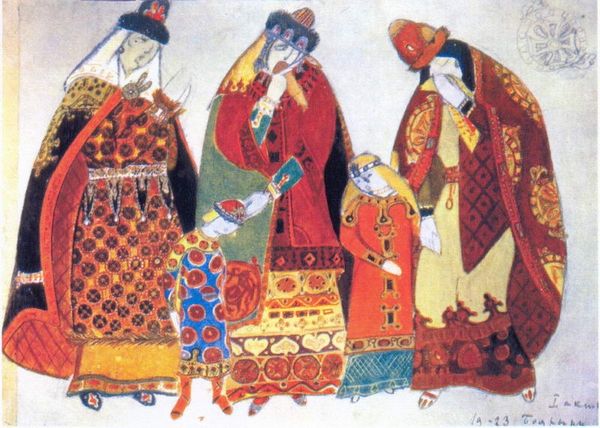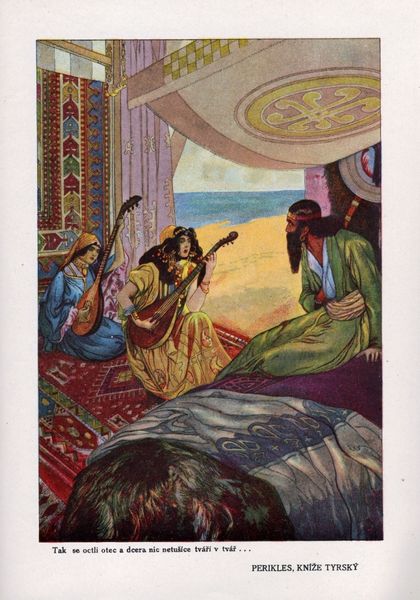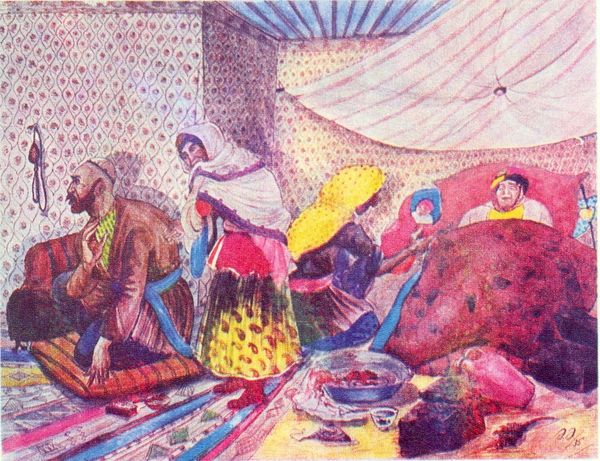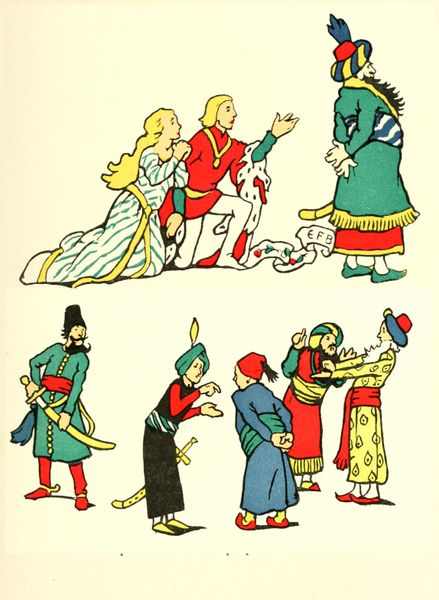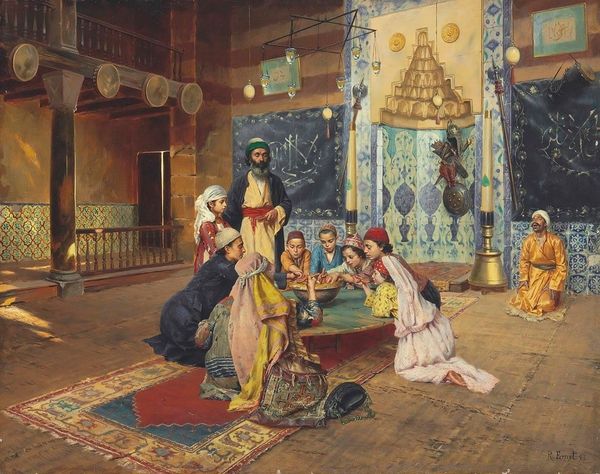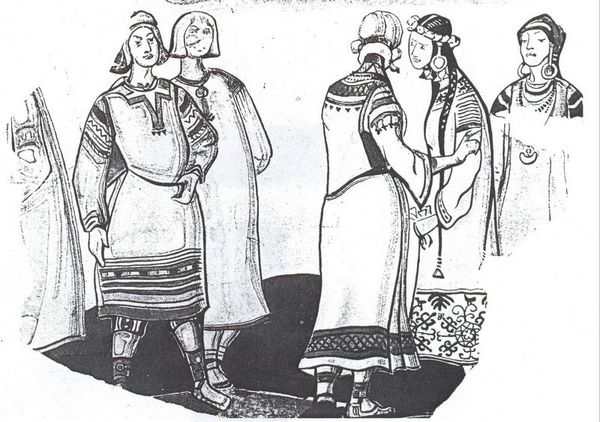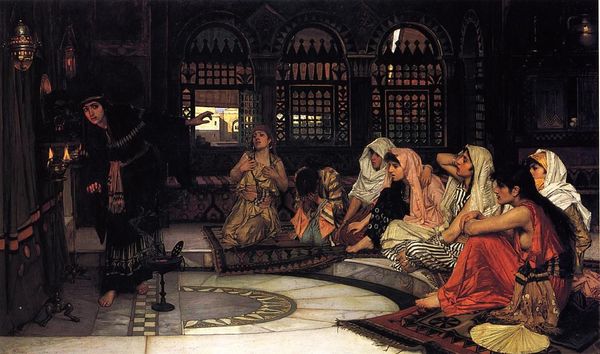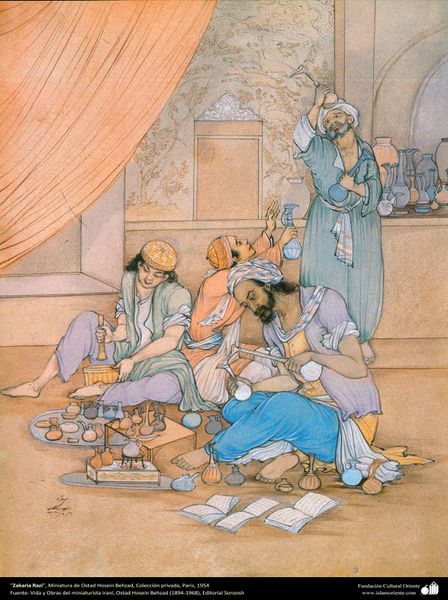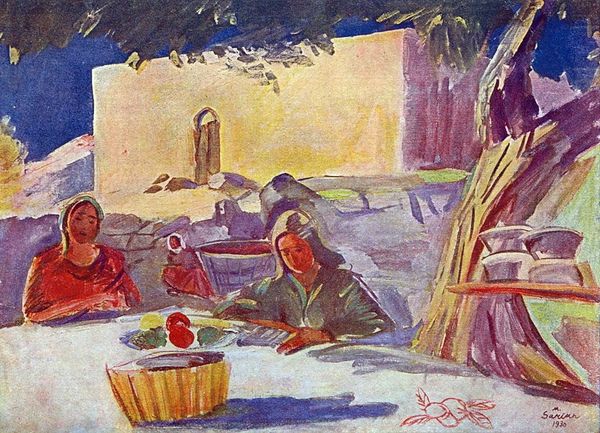
painting, watercolor
#
portrait
#
painting
#
social-realism
#
watercolor
#
naive art
#
islamic-art
#
genre-painting
Copyright: Public domain
Editor: We’re looking at "The Old Wife and the New One" by Azim Azimzade, created in 1935 using watercolor. The scene depicts a man seated with a woman adorned in gold, while another woman, veiled, sits in the shadows. The whole thing is laid out on a richly decorated carpet. The contrast between the two women is really striking. What do you see in this piece? Curator: For me, it’s all about the means of production and the socio-economic forces at play. Azimzade, working during a time of huge social upheaval, isn't just depicting a domestic scene. He's presenting a commentary on the changing role of women and class dynamics. The materials – the cheap but accessible watercolor – speaks volumes, it’s a medium for the masses. It allowed him to create art that could circulate widely, influencing public opinion. Editor: So you see the medium itself as part of the message? How does that influence our interpretation of the ‘old’ and ‘new’ wife dynamic? Curator: Precisely. Think about the cost of the pigments, the accessibility of paper. Azimzade used the available means to expose uncomfortable realities, the shift in social and marital status and how it's influenced by access to goods and material wealth. Is the 'new' wife really empowered, or is she merely a commodity in this social structure? What labour was needed to secure this supposed shift of social power? Editor: That’s a really interesting perspective. I was initially focused on the emotional contrast, but the lens of materiality really changes the picture. I hadn’t considered the artist’s economic constraints when examining what he might have to say in the piece. Curator: Exactly. Art isn't just about aesthetics. It's about the sweat, resources, and systems that bring an idea to life. Thinking about it that way reveals a deeper social context to our interpretations.
Comments
No comments
Be the first to comment and join the conversation on the ultimate creative platform.
